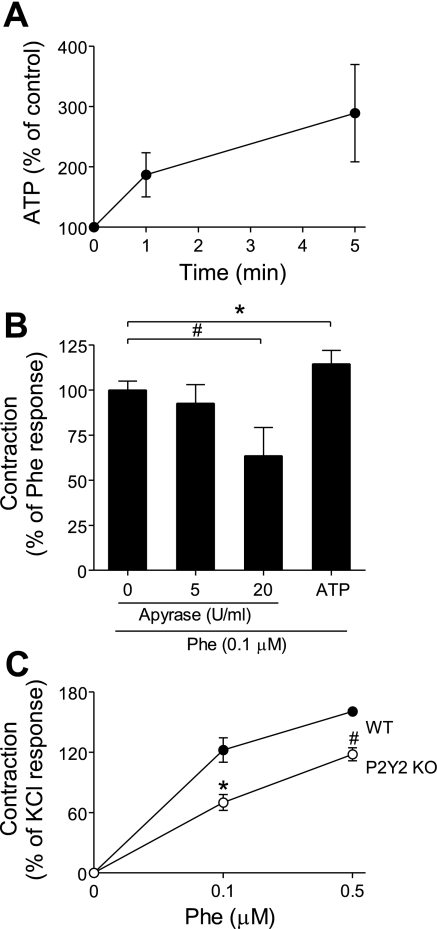Fig. 8.
ATP and purinergic signaling contribute to adrenergic responses of mouse aorta specimens. A: mouse thoracic aorta sections were stimulated with the α1-receptor agonist phenylephrine (1 μM), and ATP released into the tissue bath solution was determined at the indicated time points using an ATP bioluminescence assay kit. Data are expressed as percentage of baseline readings of unstimulated control tissue. Values are shown as means ± SD of triplicate determinations. B: mouse aorta rings were isolated as described above, and the endothelial layer was removed. The aorta rings were mounted on an apparatus that allows assessment of isometric contraction force and were treated with the indicated concentrations of the ATP scavenger apyrase for 10 min. Then, the aorta rings were stimulated with the α1-receptor agonist phenylephrine (0.1 μM) and contraction was recorded. The response to extracellular ATP was determined by adding exogenous ATP (10 μM). The data shown are means ± SD and are expressed as percentage of phenylephrine response. Statistical analysis was done with Student's t-test; #P < 0.01; *P < 0.05; n = 3. C: mouse aorta rings from wild-type mice (WT, n = 4) or from P2Y2 knockout mice (P2Y2 KO, n = 4) were prepared as described above, stimulated with the indicated concentrations of phenylephrine and contraction was recorded. The data shown are means ± SD of maximum contraction responses, and results are expressed as percentage of contraction in response to KCl (110 mM). Statistical analysis was done with Student's t-test; #P < 0.01; *P < 0.05.

